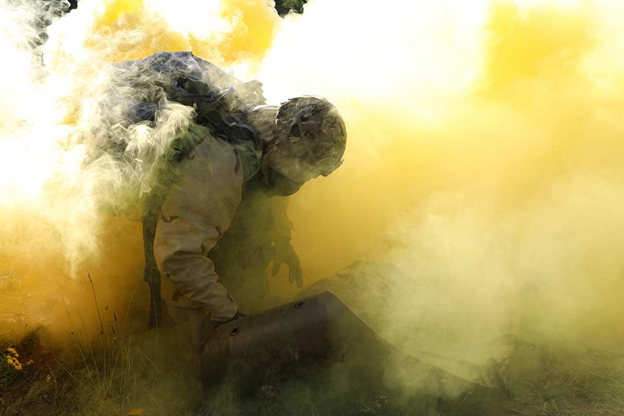Visual disturbances are a common symptom following traumatic brain injury (TBI). TBI is prevalent in military populations due to the high incidence of blast or blunt force trauma during military service. TBI can lead to various kinds of ocular trauma and visual dysfunction which may arise immediately after injury or over time. Visual disturbances, such as blurry vision and the inability to focus the eyes, appear to be more frequent following TBI.1 There have been several studies focused on military populations, visual disturbances, and TBI; however, to date, no studies have been conducted which emphasize an association between mild TBI (mTBI) and changes in refractive error, also known as blurry vision.1 As visual dysfunction tends to worsen over time, a better understanding of brain injuries and their impact on vision will allow for better treatment options for Service members and Veterans.
The research team1 set out to examine whether visual functioning differed between Veterans with and without a history of mTBI several years after deployment using self-report assessments as well as ocular testing to examine visual function. They observed that compared to participants without a history of mTBI, 70 percent of participants with a history of mTBI exhibited deficits in vision, specifically in incidents where objects in their visual field become blurry. This finding supports the current literature and highlights the chronic nature of mTBI. TBI can also lead to tissue damage, which can impact the retina and other visual structures, causing a variety of disorders such as near-sightedness, blurry vision, and decreased sensitivity across the visual field. This study utilized distance and near visual acuity tests to examine near- and far-sightedness to provide a novel link between mTBI and myopia (near-sightedness). Results demonstrated that the number of blast mTBIs sustained was associated with worse distance acuity scores, but were unrelated to near acuity scores.1 More accuracy in scoring distance and near acuity may lead to a better way to rule out disorders, such as astigmatism, which can lead to more accurate diagnoses for distance-related disorders. However, this finding is limited by other unknown causes of myopia, such as genetic and environmental factors.2
This study's examination of mTBI and visual disturbances can support enhanced care for Service members and Veterans experiencing visual disturbances after mTBI. Current vision care practices include eyeglasses, prism therapy to eliminate double vision, and surgery.3 A history of TBI may complicate visual dysfunction due to sensory, motor, cognitive, and psychological comorbidities.3 As TBI is an occupational health hazard, continued research is important for improving ocular health and Force fitness of Service members and Veterans.

1. Fortenbaugh FC, Gustafson JA, Fonda JR, Fortier CB, Milberg WP, and McGlinchey RE (2021). Blast mild traumatic brain injury is associated with increased myopia and chronic convergence insufficiency. Vision Research. doi: 10.1016/j.visres.2021.04.004.
2. Vitale S, Sperduto RD, Ferris III, FL (2009). Increased Prevalence of Myopia in the United States Between 1971-1972 and 1999-2004. Arch. Ophthalmol. doi: 10.1001/archophthalmol.2009.303.
3. "Assessment and Management of Oculomotor Dysfunctions Associated with Traumatic Brain Injury". Vision Center of Excellence. December 13, 2016.
This research was supported by the Department of Veterans Affairs (VA) through the Translational Research Center for TBI and Stress Disorders (TRACTS), a VA Rehabilitation Research & Development Traumatic Brain Injury National Research Center (B3001-C), a Career Development Award from the Department of Veterans Affairs Rehabilitation Research and Development (5IK2RX002268) to F.C.F, a VA Clinical Science Research & Development Merit Review (CX001327) to R.E.M, and a National Institute of Health NCCIH grant (R21 AT009430- 01) to W.P.M.
Your 15 minute session will timeout in approximately 10 minutes.
If you're in the middle of entering information, please close this warning and save your progress (if possible) or finish up your task.
If your session fully times out, you will lose any un-saved work.
Your current Blast Injury Research Program session has expired.
Your next click will take you away from the private area, and you will lose any work you have in-progress.
Please enter your email address, and try again.